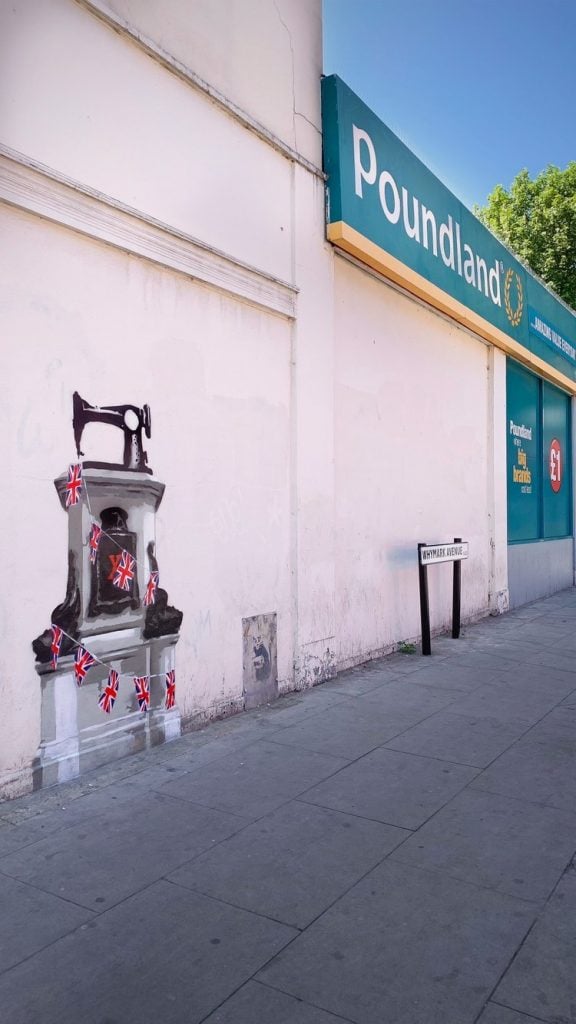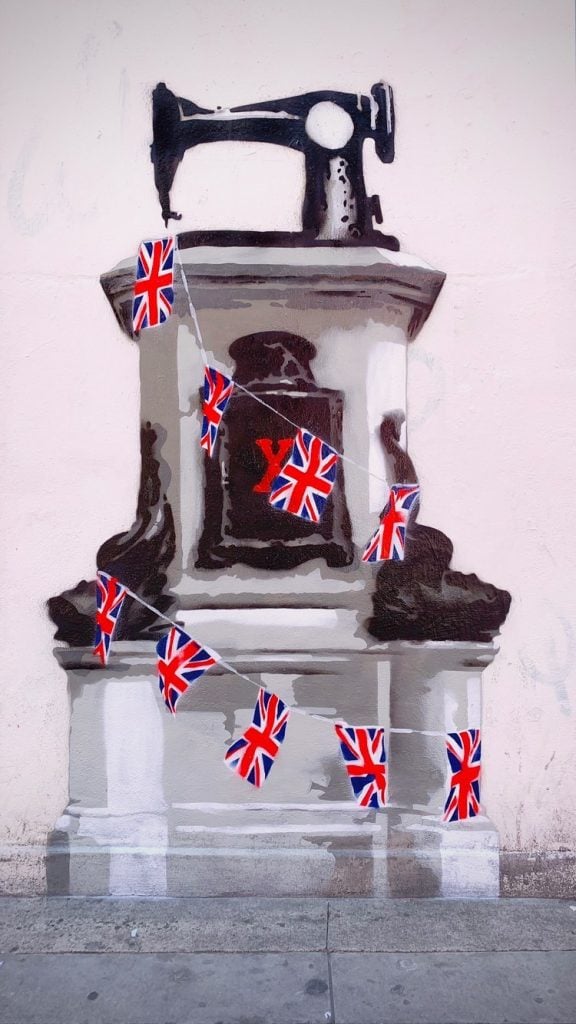Art World
Womp Womp: Turns Out This Mural Londoners Thought Was a Banksy Is Actually Just a Tribute by a Local Fan Artist
A Banksy work in the same spot disappeared nine years ago.

A Banksy work in the same spot disappeared nine years ago.

Amah-Rose Abrams

What people thought was a new mural by Banksy in Wood Green North London has turned out to be the work of British artist James Straffon.
The mural, which went up a few days ago, is an homage, Straffon said, to a Banksy work that was stolen from the same spot nine years ago, and to the felling of a statue of Edward Colston in Bristol during the Black Lives Matter protests there in 2020.
The work is sprayed onto the side of a Poundland store where all items cost around £1, in a non-glamorous area of London. It shows Colston’s plinth with a sewing machine on top of it churning out Union Jack bunting. It appears just ahead of the Queen’s Platinum Jubilee at the end of the month.

James Straffon, Ten Years a Slave (2022). Photo courtesy the artist
“My Ten Years a Slave artwork is an homage to Banksy’s original Slave Labour artwork, created exactly 10 years ago, as a provocative statement against child labor, and slavery in the modern sense,” Straffon told Artnet News. “I wanted to restore the original, and at the same time continue the conversation recently ignited around the shadows of our colonial past. To that end, placing Banksy’s original sewing machine atop the now notorious Colston plinth seemed an appropriate juxtaposition.”
The mural replaces one depicting a child sewing bunting, which appeared ahead of the Queen’s Diamond Jubilee in 2013 as a comment on colonialism and child labor.
The work was subsequently taken off the wall and put on sale at auction in Miami with an estimate of $500,000 to $700,000. It was titled Banksy Slave Labor (Bunting Boy). It was later withdrawn from sale along with a Banksy work that had been taken from the West Bank in Gaza known as Wet Dog (2007).

The Original Stolen Poundland Banksy. Photo by Peter Macdiarmid/Getty Images.
The artist famously does not confirm authorship of street works taken from their original locations. He often chooses underprivileged neighborhoods in the U.K. and highlights political issues relevant to the people living there.
On a recent art-making spree last August, Bansky ventured across East Anglia, putting up work in seaside towns such as Lowestoft, Gorleston, Oulton Broad, Cromer, and Great Yarmouth.
“My intention was not to replace,” Straffon said, “but to reintroduce the energy from the original, whilst giving something back to a very art-aware and proud north London culturally-rich community, from where Slave Labour was previously ’stolen’ by capitalist benefactors, not art lovers.”